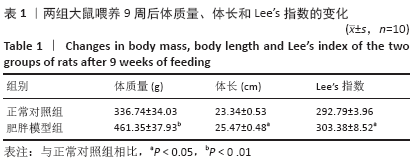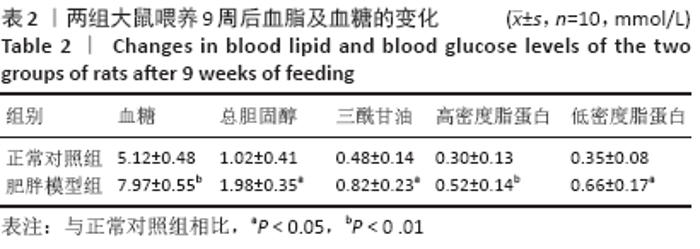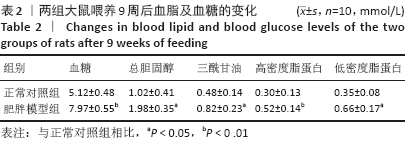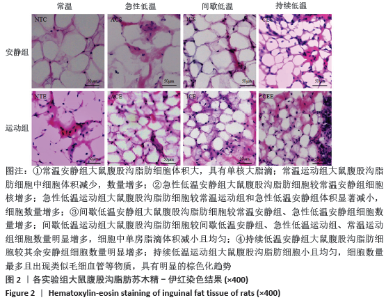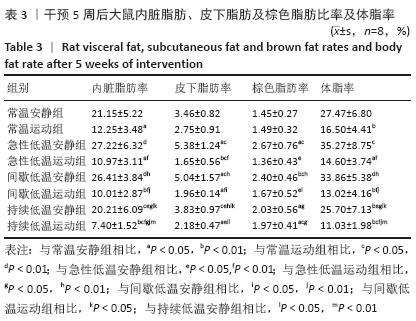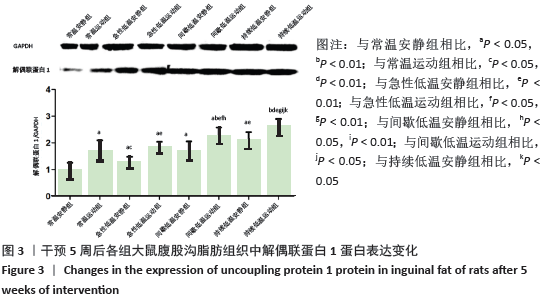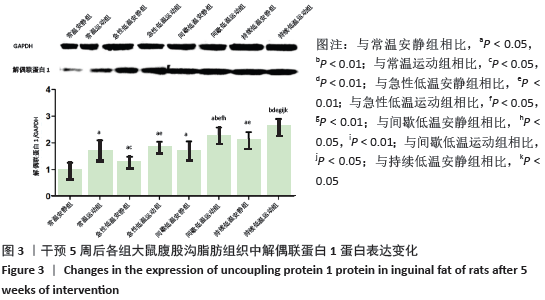[1] PEIRCE V, CAROBBIO S, VIDAL-PUIG A. The different shades of fat. Nature. 2014;510(7503):76-83.
[2] SANCHEZ-DELGADO G, MARTINEZ-TELLEZ B, OLZA J, et al. Role of exercise in the activation of brown adipose tissue. Ann Nutr Metab. 2015;67(1):21-32.
[3] GEORGIANOS PI, ZEBEKAKIS PE. General obesity, abdominal adiposity, and the risk of incident hypertension-From anthropometry to modern imaging techniques. J Clin Hypertens. 2018;20(10):1427-1429.
[4] CAREY AL, VORLANDER C, REDDY-LUTHMOODOO M, et al. Reduced UCP-1 content in in vitro differentiated beige/brite adipocytes derived from preadipocytes of human subcutaneous white adipose tissues in obesity. Plos One. 2014;9(3):e91997.
[5] CHONDRONIKOLA M, VOLPI E, BØRSHEIM E, et al. Brown adipose tissue improves whole-body glucose homeostasis and insulin sensitivity in humans.Diabetes. 2015;64(6):e12.
[6] CYPESS AM, LEHMAN S, WILLIAMS G, et al. Identification and importance of brown adipose tissue in adult humans.New Eng Med. 2009;360(15):1509.
[7] BETZ MJ, ENERBÄCK S. Targeting thermogenesis in brown fat and muscle to treat obesity and metabolic disease. Nat Rev Endocrinol. 2018;14(2):77-87.
[8] HIMMS-HAGEN J. Thermogenesis in brown adipose tissue as energy buffer. N Engl J Med. 1984;311(24):1549-1558.
[9] MENG Y, CHEN L, LIN W, et al. Exercise reverses the alterations in gut microbiota upon cold exposure and promotes cold-induced weight loss. Front Physiol. 2020;11:311.
[10] 昝玉玺, 王天云, 董卫华, 等. 高脂饲料诱发大鼠肥胖模型的实验研究[J]. 现代预防医学,2008,35(16):3131-3132.
[11] SMITH RE, HOCK RJ. Brown fat: thermogenic effector of arousal in hibernators. Science. 1963;140(3563):199-200 .
[12] IKEDA K, MARETICH P, KAJIMURA S. The common and distinct features of brown and beige adipocytes. Trends Endocrinol Metab. 2018;29(3):191-200.
[13] ROTHWELL NJ, STOCK MJ. Luxuskonsumption, diet-induced thermogenesis and brown fat: the case in favour. Clin Sci (Lond). 1983;64(1):19-23.
[14] HUTTUNEN P, HIRVONEN J, KINNULA V. The occurrence of brown adipose tissue in outdoor workers. Eur J Appl Physiol Occup Physiol. 1981;46(4):339-345
[15] VAN MARKEN LICHTENBELT WD, VANHOMMERIG JW, SMULDERS NM, et al. Cold-activated brown adipose tissue in healthy men. New Eng J Med. 2009;360(15):1500-1508.
[16] BLONDIN DP, LABBÉ SM, TINGELSTAD HC, et al. Increased brown adipose tissue oxidative capacity in cold-acclimated humans. J Clin Endocrinol Metab. 2014;99(3):E438-E446.
[17] LEHNIG AC, DEWAL RS, BAER LA, et al. Exercise training induces depot-specific adaptations to white and brown adipose tissue. iScience. 2019;11:425-439.
[18] DEWAL RS, STANFORD KI. Effects of exercise on brown and beige adipocytes. Biochim Biophys Acta Mol Cell Biol Lipids. 2019;1864(1):71-78.
[19] LIU D, CEDDIA RP, COLLINS S. Cardiac natriuretic peptides promote adipose ‘browning’ through mTOR complex-1. Mol Metab. 2018;9:192-198.
[20] EGECIOGLU E, ANESTEN F, SCHÉLE E, et al. Interleukin-6 is important for regulation of core body temperature during long-term cold exposure in mice. Biomed Rep. 2018;9(3):206-212.
[21] CUEVAS-RAMOS D , MEHTA R , AGUILAR-SALINAS CA . Fibroblast Growth Factor 21 and Browning of White Adipose Tissue. Front Physiol. 2019;10:37.
[22] VITALITY A, MURANO I, ZINGARETTI MC, et al. The adipose organ of obesity-prone C57BL/6J mice is composed of mixed white and brown adipocytes. J Lipid Res. 2012;53(4):619-629.
[23] ROSENWALD M, PERDIKARI A, RÜLICKE T, et al. Bi-directional interconversion of brite and white?adipocytes. Nature Cell Biol. 2013;15(6):659-667.
[24] PASCHOS GK , YEW TS , THEKEN KN , et al. Cold-Induced Browning of Inguinal White Adipose Tissue Is Independent of Adipose Tissue Cyclooxygenase-2. Cell Rep. 2018;24(4):809-814.
[25] FINLIN BS , ZHU B , CONFIDES AL , et al. Mast Cells Promote Seasonal White Adipose Beiging in Humans. Diabetes. 2017;66(5):1237-1246.
[26] PERES VALGAS DA SILVA C, HERNÁNDEZ-SAAVEDRA D, WHITE JD, et al. Cold and Exercise: Therapeutic Tools to Activate Brown Adipose Tissue and Combat Obesity. Biology. 2019;8(1):9.
[27] HIMMS-HAGEN J, MELNYK A, ZINGARETTI MC, et al. Multilocular fat cells in WAT of CL-316243-treated rats derive directly from white adipocytes. Am J Physiol Cell Physiol. 2000;279(3):C670-C681.
[28] 王朝格. 低温运动对肥胖大鼠胰岛素抵抗及脂肪Betatrophin蛋白表达的影响[C]. 第六届广州运动与健康国际学术研讨会暨第六届“体医结合论坛”论文集.中国体育科学学会:中国体育科学学会,2019,6(1): 219.
|

